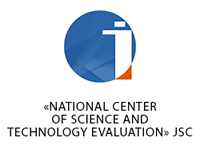BIOLOGICAL AND ECOLOGICAL CHARACTERISTICS OF THE SALMONELLOSIS CAUSATIVE AGENT IN COMMERCIAL CHICKENS
DOI:
https://doi.org/10.53729/MV-AS.2024.01.04Keywords:
Salmonella, salmonellosis, poultry, pullorosis, typhoid feverAbstract
In the process of a systematic research review, the biological, evolutionary, and ecological features of Salmonella, contributing to its colonization in poultry, were studied. The disease in farm chickens is caused by specific (Salmonella pullorum, Salmonella gallinarum) and nonspecific (Salmonella enteritidis, Salmonella typhimurium) salmonella. Salmonella infection, as well as multidrug resistance in Salmonella isolates, represents a global problem for the poultry industry and public health. Salmonella bacteria are one of the causes of acute and chronic poultry infectious diseases. Being a reservoir of Salmonella, the infected chicken can transmit this pathogen through the food chain to humans. The aim of the work is to update the data on genotypic and phenotypic characterization of bacteria of Salmonella genus. The scientific importance of the study consists in a detailed analysis of the current bioecological characteristics of the pathogen of salmonellosis of farm chickens, practical - in the possibility of improving, on the basis of the obtained relevant information, ways to prevent their spread in poultry farms and their transmission through chicken products to humans. The greatest damage to chickens is caused by three serovars of Salmonella: Salmonella enteritidis, Salmonella typhimurium and Salmonella Gallinarup pullorum. In chickens, the Gallinarum (SG) serovar is divided into Gallinarum (bvG) and Pullorum (bvP) biovars. They affect adult birds (with typhoid fever causing acute or chronic septicemic disease) and young ones (with pullorosis causing weakness, loss of appetite, diarrhea, exhaustion, and growth retardation). The transmission routes of the Gallinarum serovar in birds are horizontal (through contact with the environment, infected birds, and poultry houses) and vertical (through fertilized eggs). The percentage of flocks affected by pullorosis and typhoid fever is high, and the mortality rate of chickens of predominantly 2-3 weeks of age, for example with pullorosis, can reach 100% in a herd. Salmonellosis in humans is caused by the Salmonella enteritidis, Salmonella typhimurium serotypes with poultry and its products as the primary reservoirs. Prevention programs lead to a decrease in Salmonella incidence in poultry herds and, depending on the standards adopted by the state, the prevalence of various Salmonella serovars among chickens ranges from 6 to 30%. Salmonellosis control and prevention at poultry facilities in Kazakhstan are carried out on the basis of current legislative, regulatory veterinary, and sanitary documents.









